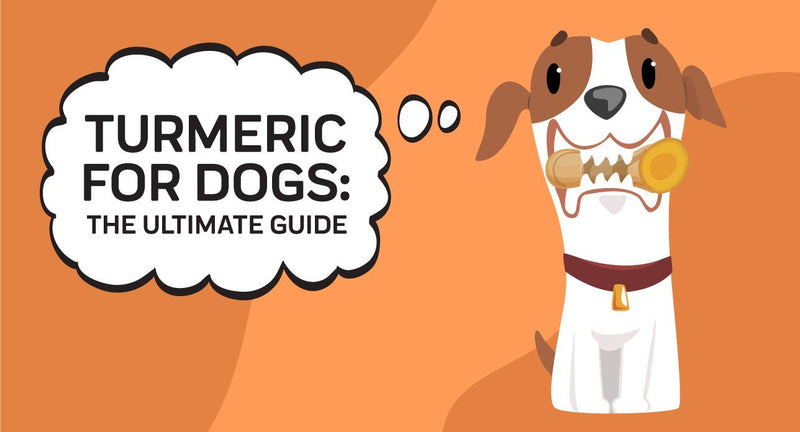- Why Vets Choose Tramadol for Dogs
- What does Tramadol do for pain in dogs?
- How Tramadol Works
- Side Effects of Tramadol for Dogs
- Concerns about Tramadol for Dogs
- Alternatives to Tramadol for Dogs
Pain treatment is an unfortunate reality many dog owners must face at some point. It's sad, but it's also scary. If your dog is already sick and suffering, you feel everything you do for them is of the utmost importance. Is the treatment enough? Will it make them worse somehow?
Is it safe? Whether your dog has cancer or arthritis, has been injured, or has just had surgery, your vet is likely to prescribe anti inflammatory drugs. You want to know everything there is to know about it and if there are other alternatives , should you decide you don't like the idea of giving a particular medication to your pet.

Why Vets Choose Tramadol for Dogs
Tramadol hydrochloride is a powerful, synthetic opioid painkiller that can be used for treating mild to moderate pain alone, and severe pain in conjunction with other medications. Veterinarians choose to prescribe it for both acute and chronic pain conditions, meaning dogs can take it both short and long term.
As an opioid, Tramadol for dogs does more than just treat pain. It also impacts mood and may be prescribed for anxiety.
Tramadol is one of the most popular pain killers prescribed for dogs because the side effects from Tramadol are usually mild and veterinarians usually hold that the risk of addiction is less than with comparable medications, though there is some debate on how true that is. When used properly, Tramadol can be a safe and effective way to manage acute pain in dogs.
For chronic pain, it may take weeks for the effects to become noticeable. For this reason, and if Tramadol dosages are not enough to provide therapeutic relief for your dog, other painkillers may be prescribed along with it.
What does Tramadol do for pain in dogs?
Tramadol is an opioid analgesic used to treat moderate to severe pain in dogs. Tramadol can be administered as a tablet, chewable or liquid oral solution and should not be given with anything that contains milk protein because drug interactions can cause an allergic reaction.
Tramadol is commonly prescribed in veterinary medicine to help relieve pain in their patients' best friends - our canine companions! Interestingly enough, this medication also has some side effects on people called "serotonin syndrome." This means you may experience hallucinations if tramadol interacts with other medications your taking like antidepressants or blood pressure pills which are both designed to increase serotonin levels naturally.
Tramadol is a prescription medication used to treat pain. It's often used post-operatively to help manage pain, and it can also be used to treat arthritis pain and other chronic conditions. Tramadol works by changing the way the brain responds to pain signals.

Tramadol is available in both oral and intravenous forms, but the intravenous tramadol form is generally only used in hospital settings. Oral tramadol can be given with or without food, but if your dog is vomiting or doesn't seem to tolerate the medication well, your veterinarian may prescribe the intravenous form.
How Tramadol Works
Tramadol is an opioid working similarly to how you generally perceive such medications. It impacts the chemicals and receptors in the brain that influence the perception of happiness and pain, specifically serotonin and norepinephrine. Like many other medications, the exact mechanisms that make it work are unknown.
Tramadol Dosage for Dogs
Tramadol is a human medication as well as a dog medication. Dogs, of course, need a different dosage because their bodies are different from ours. You could give your dog your own Tramadol prescription medications if you needed to, but it should be done under the guidance of your licensed veterinarian.
The correct Tramadol dose is determined by many factors, including the the dog's body weight and state of health of the dog, as well as the cause and severity of the pain.
The most widely accepted advice on Tramadol dosage for dogs is that it should be based from the 1 mg per 1 pound of dog model and varied according to the dog's health and the pain management level as described above.
It will usually be given 8 to 12 hours apart or a bit more frequently for cancer pain. If your veterinarian prescribed tramadol in a very different amount from this, you should ask them why to ensure your dog is not being under or over treated.
As any pet parent knows, watching your dog suffer from pain can be heartbreaking. You just want to do whatever you can to help them feel better. When your dog is dealing with chronic osteoarthritis, you might wonder if tramadol is the right option for pain relief.
Unfortunately, a recent study has shown that tramadol may not be as effective as we thought for treating pain and joint dysfunction in dogs with chronic osteoarthritis. While it's still important to talk to your veterinarian about whether or not to prescribe tramadol for your dog, this study provides important information that pet parents should be aware of.
You can't crush Tramadol, it makes it not work correctly. If you find you can't give Tramadol to your dog any other way, you should ask your vet for another medication.
Tramadol is a pain reliever that can be given with or without food, depending on what works best for your dog. Some dog parents find that their dogs do better when they take tramadol with food, while others find that it doesn't make a difference. If your dog vomits when taking tramadol on an empty stomach, you may need to give future doses with food or a treat.
Side Effects of Tramadol for Dogs
Your dog should tolerate Tramadol pretty well. Most do not experience troubling side effects because the vet carefully chooses the dose to prevent over-medicating the dog.

If they do have side effects from Tramadol, they could be:
- sedation
- nausea
- vomiting
- loss of appetite
- constipation
- diarrhea
- dizziness
- lack of coordination
- anxiety
- behavior changes
- tremors
Should your dog experience negative side effects from taking Tramadol, discuss them with your veterinarian to ensure they are not getting too much medication or it simply isn't working well for them. Something may need to be done about the dosage or the type of medication, or there could be a treatment for the side effect.
Concerns about Tramadol for Dogs
Tramadol Overdose in Dogs
Pet owners greatest concerns about Tramadol are overdose and addiction. A dog taking too much Tramadol could hurt themselves, become frighteningly sedated, or even die. The dog's blood pressure, breathing, and slow heart rate are overdose symptoms of Tramadol.
If this situation becomes severe enough, it can lead to death. Thankfully, this is very rare. Should your dog show signs of Tramadol overdose, you should get them to a vet as soon as possible.
Tramadol Addiction in Dogs
Opioids make dogs feel euphoric, that super good feeling that makes humans get addicted to drugs. It is also way too easy for the dog's body to become tolerant to a certain level of medication and require more medication to maintain the same effect.
If the dog improved a great deal on the drug and then that improvement seems to wane, it may seem logical to increase the dosage, but this can be the path to your dog taking too much Tramadol.

If the medication's effectiveness wanes, it is usually more prudent to prescribe an additional treatment rather than up the dosage.
Even if the dog has never been given an excessive amount of Tramadol, they can suffer withdrawal when they stop taking it, or their dosage is lessened.
Any change in the amount of medication given to your dog should be discussed with the vet and tapered off slowly. Never, ever just stop giving your dog Tramadol.
Allergic Reactions to Tramadol in Dogs
It is possible for dogs to have an allergic reaction to Tramadol.

Consult your veterinarian immediately should your dog experience:
- rashes
- itching
- a racing heartbeat
- diarrhea
- swelling
- sneezing
- coughing
- hives
- difficulty breathing
In fact, discuss any adverse reaction your dog has with your vet to be on the safe side. Even if a symptom is not a sign of an allergic reaction, if it is negatively impacting your dog, something might be done to alleviate the problem.
Tramadol Warnings Before Use
Tramadol should not be given to a dog who:
- is taking MAOIs
- is taking SSRIs, anti-depressants
- is taking Digoxin, Quinidine, or Warfarin
- has seizures now or in the past
- is pregnant or nursing
- has liver disease
- has kidney disease
- dogs who have had trouble with Tramadol or other opioids in the past
Tell your veterinarian about any drugs, even holistic treatments, your dog is already taking. This drug may exacerbate the side effects of drugs it is already on. Also, discuss any health conditions with your vet.
Alternatives to Tramadol for Dogs
You may have decided you are not comfortable with your dog taking Tramadol. Or you may be okay with them taking it, but you'd like to know what other options are out there in case the Tramadol stops working or doesn't work well enough.
CBD Oil as a Substitute
CBD oil is an excellent replacement for an opioid medication such as Tramadol because it provides the same type of relief in a safer, non-addictive, and natural form.
CBD stands for cannabidiol, and you guessed it, it comes from marijuana and hemp. This doesn't mean your dog will get high. CBD oil sold for pets is made from hemp, which is naturally extremely low in the chemical, THC, that could make your dog high.

Of course, if your dog gets a large enough dose of Tramadol, they will get high from that.
Cannabidiol acts on chemicals and receptors in the brain similarly to the way that Tramadol works. Dogs have an endocannabinoid system that produces its own cannabinoids and need a certain balance of them to function well.
Much of the components of this system are the same as those that opioids and SSRIs treat.
CBD oil helps dogs by:
- alleviating pain
- improving mood
- decreasing anxiety
- decreasing inflammation
- providing additional nutrition
- improving stomach problems like nausea or loss of appetite
- giving them more energy
Scientists prove more ways all the time that CBD oil helps dogs, and veterinarians are helping devise CBD oil products. It is a valid, scientifically-backed method of treating and/or managing many conditions.
Your vet should be willing and able to assist you in using this treatment.
Why CBD Oil is Better Than Tramadol
CBD is all-natural and non-addictive. In fact, it is virtually impossible to give your dog too much CBD oil as all it can do is give them a sedative effect. There is no evidence of a dog having a life-threatening sedative effect from CBD oil.
Tramadol does nothing for inflammation, while CBD oil does. So, if your dog's pain is coming from inflammation, CBD oil can both help treat the pain and decrease the inflammation, rather than your dog taking Tramadol and another medication to treat the inflammation.

CBD oil shows promise as a cancer killer. If your dog has cancer and that is why they need Tramadol, then CBD oil could both help manage to alleviate their pain and potentially treat their cancer.
This has not been definitively proven yet, but scientists have gotten exciting results and are continuing to test.
You might want to use CBD oil in conjunction with current cancer treatments or as the main treatment should your dog have cancer too advanced to be treated by conventional means.
Discuss CBD oil with your veterinarian as a potential substitute for or addition to Tramadol.
They can tell you the benefits and specific dosing for your dog, as well as how they expect it to interact with any treatments they may be offering.
CBD could be particularly helpful for dogs who can't take Tramadol, are taking it and it is not effectively reducing their pain, or need the additional benefits CBD oil can provide.
How to Give Your Dog CBD Oil Instead of Tramadol
There is a huge range of products being made with CBD oil for dogs so you can give CBD oil to even the most finicky dogs.

You can find CBD oil in many forms your dog might like to take:
- oil tinctures
- oil sprays
- capsules
- treats
- soft chews
Tinctures in droppers or pumps as well as sprays can be applied directly to the dog's mouth or applied to their food.
This is the most effective means of delivering CBD oil to your dog as you have the most control of the amount they get, and it is the purest form, i.e. contains fewer ingredients.
Many tinctures and sprays contain flavorings to mask the taste of hemp because it can be a bit off-putting. You can pick which one you think your dog will most like.
Capsules are good for ensuring you are giving your dog an exact amount of CBD oil and masking the taste of the oil. Some dogs don't like the hemp taste, even when it's masked with other flavors.
If you're adding CBD oil from a tincture to their food, you could also discover that they don't eat all the food and then you aren't sure how much CBD they ingested. A capsule can prevent that.
Treats and soft chews offer a fun way to get CBD oil into a dog who doesn't want to take it in other forms.
A quality manufacturer of CBD oil treats and soft chews will ensure an exact, measured dosage of CBD oil in each treatment and keep ingredients as low as possible. They may have real meat in them and taste as good as their normal treats.
Dosages of CBD Oil for Dogs
The product you buy will tell you how much to give according to your dog's weight. Often, when purchasing, you'll need to choose an option based on the size of your dog. The dosage can be raised up or down as you deem is needed after trying it out on your dog.
It's easy to adjust because there is so little risk that your dog will have an adverse reaction. If you are concerned about managing this yourself, you can ask your vet for advice.
Choosing A CBD Oil Product for Your Dog
Do read the ingredients list on any product you consider for your dog. There may be an alarming amount of ingredients, some may not be natural, and some are, sadly, not really safe.
Learn where the company making the product acquired or grew their hemp. Some companies are not honest and sell CBD oil made from poor-quality or fake hemp.

Check for lab results from third-party testing on the product you're considering. This will help you ensure you are getting the amount of CBD oil the company promises.
And that there really is CBD oil in the product. It is possible to mistakenly purchase products claiming to contain CBD oil that have no actual CBD oil in them.
Most CBD oil companies boast that they sell natural products because their target market likes it, but you can also find organic hemp CBD oil products. Organic is best because you're avoiding potentially harmful chemicals.
This would not normally be pesticides because hemp is naturally pest repellant, but the CBD oil manufacturer may use other chemicals or purchase ingredients that contain chemicals.
Look for a mention of the manufacturer using the CO2 extraction method as it is the safest and purest way of extracting CBD oil.
Full-Spectrum vs Isolate CBD Products
Most people want full-spectrum CBD oil to gain a broader range of nutrients and cannabinoids. If you don't want that, only wanting to administer CBD and the few ingredients in the form sold to your dog, then a CBD isolate is fine. You may discuss the benefits of full-spectrum CBD oil versus CBD isolate with your vet. The need varies depending on the ailment your dog is suffering from, nutrients they may need to gain from a supplement, and what simply works better for your dog.
Where to Find CBD Oil for Dogs
100% organic CBD products are exploding in popularity all over the internet, some great and most scary. You can start your journey into the world of pet CBD oil with Innovet Pet Products CBD Oil and Hemp Treats.
Our CBD oils are:
- full-spectrum
- extracted using the cold CO2 method
- sourced from Oregon, Germany, and the U.K.
- legal in all 50 states
- THC-free
- third-party lab tested with results available on the website
- Current products include tinctures, capsules, treats, and soft chews. We do not have any CBD isolate products at this time.
Do ask us about creating products specifically for your pet. Should you want CBD isolate, feel that one of our products could be made better, or have a pet ailment that there isn't a product to treat, or treat effectively, contact us to see if we can't create a solution specifically for your pet. We're in the business of treating the trickiest pet problems. You can also purchase supplies for helping you administer medication to your pet from us.




















I was very impressed with your site. The language was quite understandable, and easy to read. I have two German Shepherds around 7 years young. One has cancer growing on his heart that is slow growing, and the other has hip dysplasia, bone on bone. They are both bright and playful, just not ready to lose them until they show me it’s time. My Vet is very good I think, and she has them both on Tramadol, close to same weight and age. I am having alot of trouble getting them to take the pills. I have tried Pill Pockets; hamburger, other soft food, cottage cheese, mac and cheese. And then I read at your site to say away from milk products. Thank you for the proper information. If you have any suggestions to help them, please feel free.. And again thank you for the quality information.